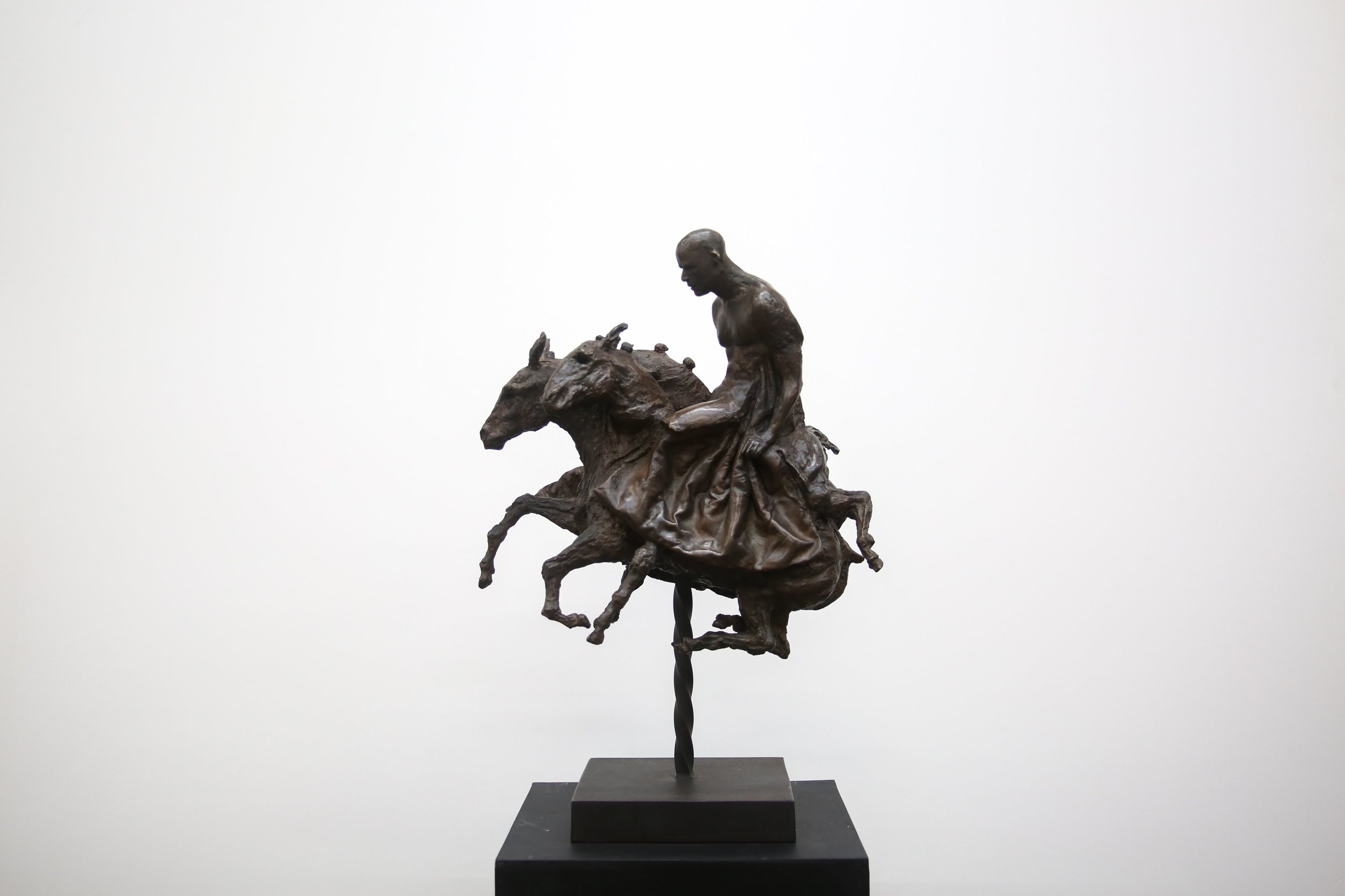Visitors often do a double take when they walk by Beth Carter’s new sculptures that we currently have on display in our Boston gallery. Carefully crafted with an acute attention to detail, her work is visually beautiful. However, this beauty runs deep as the work is further enriched with layers of meaning and symbolism, left for the viewer to unpack.
Carter’s sculptures emit an unarguably dark and mysterious quality. “Broken Carnival” is one of such pieces in which each of its three subjects, a man and three horses, display expressions of ferocity, and power. The man, with a stiff and hunched posture, fervently looks into the distance. The artist pays careful attention to the details on his body, whether they be strains in his neck, or wrinkles stretching along his face. These details, though minimal, are enough to convince the viewer of the man’s powerful distress. The artist applies the same specificity to the horses as well, though to communicate a different expression. The texture of their skin is rough and uneven, and their anatomical parts are stripped of any indication of emotion. Their eyes, for example, are hollowed out with a directionless gaze. The eerie, haunting horses, juxtaposed with the man displaying such strong emotions, creates an interesting tension within the sculpture and conveys a mysterious relationship between its two components.
“Monkey and Horse” is another new piece in Carter’s collection, illustrating a strange and intriguing relationship between two animals. With the same treatment of material as “Broken Carnival”, the sculpture’s rough and textured surface seems to contribute to the chaotic tension of the composition. As the horse is falling to the ground, the monkey sits calmly on top of it, with its long, dainty tail wrapping around the horse’s flank. The stark contrast between the body language of the two animals introduces another strange relationship into Carter’s new body of work. Both of the represented animals, with their eyes hollowed out, demonstrate a curious indifference towards one another. Though the monkey stares directly at the horse, its strangely calm demeanor is incongruous with the horse’s panic.
Carter incorporates mythological creatures into another one of her new pieces titled “Pegasus”. Carter’s work starkly contrasts the common depiction of the fictional Pegasus as powerful and liberated, often symbolizing freedom because of its ability to move on land and in air. She instead presents her subject as tired and distraught. Its legs seem disjointed, moving in all different directions. Its wings, shaped like a piece of fabric, seem to catch the wind and pull against the creature’s body. The tension of this piece lies between the Pegasus’s anatomical parts, each functioning independently of one another. This piece, though rendered with the same rough surface as the previous works, stands apart because the compositional tensions can now be observed in a single subject.
Beth Carter often works with both human and animal form, integrating the two into a single composition or body. These combinations are often inspired by classical mythological creatures and stories. However, Carter connects the traditional practice of bronze casting and the traditional sources of mythological narratives to timeless concepts. She explores the idea of subconscious imaginings, and performance of gender and personhood. Carter draws from past technical and inspirational sources in order to communicate universally important ideas.
All three of these pieces are currently on display in our Boston gallery. Be sure to stop by to take a closer look—sculptures always look better in real life!
Text | Kabita Das
Photography | Beth Carter, Kabita Das






